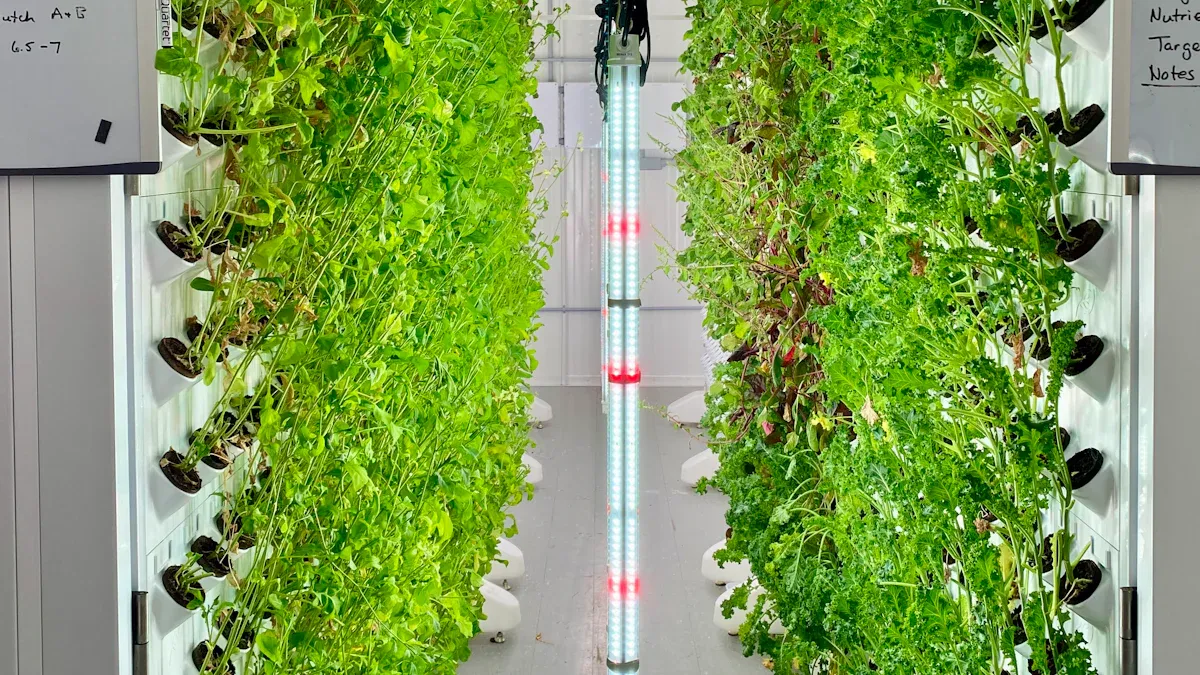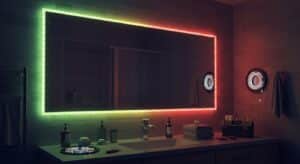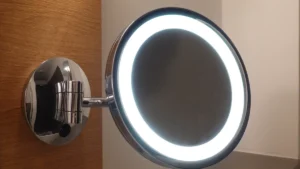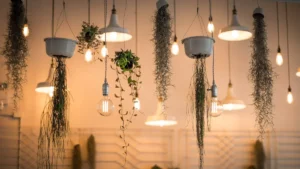
If you’re looking for a simple way to boost your indoor garden, LED strip lights might be just what you need. These lights are designed to provide the right spectrum of light that plants crave, mimicking the sun’s rays. They’re energy-efficient, compact, and easy to set up, making them perfect for small spaces. With the right LED strip for plant growth, you can help your plants thrive, whether you’re growing herbs, flowers, or vegetables. Plus, they last a long time, so you won’t have to worry about replacing them often.
Key Takeaways
LED strip lights use less energy, saving money and power.
You can adjust the light colors to help plants grow better.
These lights work well in small indoor spaces because they are small.
They last a long time, from 25,000 to 75,000 hours.
Cleaning and checking settings often keeps plants growing their best.
Benefits of Using LED Strip Lights for Plant Growth
Energy Efficiency and Cost Savings
LED strip lights help save energy and money. They use 50-70% less power than older lights, making them eco-friendly. Unlike traditional lights, LEDs turn most energy into light, not heat. This saves on electricity and reduces the need for cooling systems.
Here’s a simple comparison of LED strip lights and traditional lighting:
Benefit | LED Strip Lights | Traditional Lighting |
|---|---|---|
Energy Use | 50-70% less energy | Uses more energy |
Light Efficiency | Almost all energy becomes light | Loses energy as heat |
Spectrum Control | Adjustable for plant needs | Fixed spectrum |
Switching to LED strip lights helps plants grow well and saves money.
Customizable Light Spectrums for Different Plant Needs
Plants need different light colors to grow. LED strip lights let you adjust the light spectrum. Red light helps flowers and fruits grow. Blue light helps leaves grow. Full-spectrum LEDs copy sunlight, helping plants at all stages.
Studies show light colors affect plant growth. For example, basil grows taller with green light. Blue light boosts antioxidants. Here’s how light spectrums affect plants:
Plant Species | Light Treatment | Growth Parameter | Antioxidant Activity (TPC) | Antioxidant Activity (TFC) |
|---|---|---|---|---|
Basil Family Microgreens | Green Light | Taller growth over time | Higher TPC under white/red light, blue light at 22 DAS | High TFC under white light, blue light at 22 DAS |
Peppermint | White Light | – | Higher TPC at 22 DAS | High TFC at 14, 18, 26 DAS, peak at 26 DAS |
Thai Basil | White Light | – | Higher TPC at 22 DAS | High TFC at 14, 18, 30 DAS, peak at 22 DAS under blue light |
With adjustable light, you can grow plants better indoors.
Space-Saving and Versatile Design
LED strip lights are great for small spaces. Their slim design fits under shelves or on walls. They don’t get too hot, so plants stay safe in tight areas.
These lights are also very flexible. You can change their light colors for different plant stages, like seedlings or flowers. They work well even with limited power.
Tip: Use LED strip lights to save space and keep plants healthy.
With their small size and flexibility, LED strip lights make indoor gardening easy.
Long Lifespan and Durability
When it comes to durability, LED strip lights are hard to beat. They’re built to last, making them a smart investment for your indoor garden. Unlike traditional lights, LEDs don’t have fragile parts like filaments or glass, so they’re less likely to break. This means you can count on them to keep shining, even in challenging conditions.
LED strip lights also have an impressive lifespan. Most manufacturers report that these lights can last anywhere from 25,000 to 75,000 hours. That’s years of reliable use! Some high-quality systems even claim lifetimes of over 150,000 hours based on the L70 standard, which measures how long the light stays bright before dimming. On average, horticultural LED systems are designed to work for about 45,000 hours while maintaining 90% of their light output.
Here’s why they last so long:
No moving parts: LEDs don’t have components that wear out quickly.
Efficient design: They produce light without generating much heat, which reduces wear and tear.
High-quality materials: Many LED systems are made to resist moisture and dust, making them perfect for indoor gardening.
Fun Fact: If you use your LED strip lights for 12 hours a day, a system with a 50,000-hour lifespan could last over 11 years!
With such durability, you won’t need to worry about frequent replacements. This saves you time and money in the long run. Plus, their consistent performance ensures your plants get the light they need to thrive. So, when you choose LED strip lights, you’re not just picking a light source—you’re investing in a long-term solution for better plant growth.
How to Set Up LED Strip for Plant Growth
Choosing the Right LED Strip Lights
Understanding Light Spectrums (Red, Blue, and Full Spectrum)
Picking the right LED strip means knowing about light spectrums. Plants need different light colors for each growth stage. Red light helps flowers and fruits grow. Blue light is great for growing leaves. Full-spectrum lights mix these colors, acting like sunlight. They help plants grow from start to finish. For example, leafy greens love blue light. Flowering plants, like tomatoes, grow better with red light. If you grow many types of plants, full-spectrum LED strips are the best choice.
Wattage and Brightness Considerations
Wattage and brightness are important for plant growth. Choose LED strips with high lumens for bright light. More light means better photosynthesis and healthier plants. Look for strips with high PPFD for strong light coverage. Use energy-efficient strips to save power. Adjustable lights let you change brightness as plants grow. This helps seedlings and mature plants get the right light.
Installation Tips for DIY Grow Lights
Cutting and Mounting LED Strips
Setting up DIY grow lights is simple. First, measure your space to know how much strip you need. Most LED strips can be cut to fit your setup. Use sticky backing or clips to attach the strips. For bigger setups, use hangers to adjust the height as plants grow taller.
Ensuring Proper Light Distribution
Plants need even light to grow well. Place LED strips evenly to avoid dark spots. If using many strips, connect them in parallel for steady brightness. Use timers to give plants 12-18 hours of light daily. This keeps their growth on track.
Positioning LED Strip Lights for Optimal Coverage
Adjusting Distance Between Lights and Plants
The space between lights and plants matters. If lights are too close, plants may overheat. If too far, plants won’t get enough light. Keep lights 12-18 inches above plants. As plants grow, move the lights higher to keep good coverage.
Aligning Lights Parallel to Plant Canopy
Place LED strips parallel to the plant tops for even light. This helps all parts of the plant grow equally. For bigger spaces, overlap light zones a little to avoid shadows.
Pro Tip: Clean your LED strips often to remove dust. This keeps them bright and helps plants grow better with your DIY setup.
Maintenance and Troubleshooting for LED Strip Lights
Keeping your LED strip lights in top shape is essential for healthy plants and efficient lighting. Regular maintenance and quick troubleshooting can save you time and ensure your DIY LED grow light setup works perfectly.
Cleaning and Inspecting LED Strips
Dust and dirt can block light and reduce efficiency. Cleaning your LED strips regularly helps maintain their brightness and extends their lifespan. Follow these steps to keep them in great condition:
Turn off and unplug the lights for safety.
Let the lights cool down before handling them.
Use a dry cloth to wipe the frame and remove dust.
Clean the lenses with a soft handkerchief for better light transmission.
For stubborn spots, use a nonabrasive towel with rubbing alcohol.
Dry everything with a microfiber cloth to prevent water damage.
Inspect for damage or wear during cleaning.
Tip: Regular cleaning prevents dust buildup, which can block light and affect plant growth.
Monitoring Plant Growth and Adjusting Light Settings
Your plants’ growth depends on the right light settings. Monitor their height, color, and overall health to decide if adjustments are needed. Studies show that red and blue light significantly impact plant height and width. Red light promotes flowering, while blue light supports leafy growth. If your plants look weak or leggy, try tweaking the light spectrum or brightness.
Pro Tip: Use a timer to maintain consistent light schedules for your plants. This ensures they get the right amount of light daily.
Common Issues and Solutions
Flickering or Dim Lights
Flickering lights can stress plants and reduce their growth. Check all connections to ensure they’re secure. Use high-quality LED strips and compatible dimmer switches to avoid this issue. Regular cleaning also helps prevent flickering.
Overheating and Heat Dissipation
Overheating can damage your LED strips and harm your plants. Ensure proper ventilation around the lights. Keep them at a safe distance from plants to avoid heat buildup. If overheating persists, inspect for faulty components and replace them promptly.
Note: A well-maintained DIY grow light setup ensures your plants thrive without interruptions.
Tips for Achieving Better Plant Growth with DIY Grow Lights
Combining LED Lights with Other Growth Factors
Watering and Nutrient Management
Your plants need more than just light to thrive. Proper watering and nutrient management are essential for robust growth. Overwatering can drown roots, while underwatering leaves them thirsty. Check the soil regularly. If it feels dry an inch below the surface, it’s time to water. Use a watering can with a narrow spout for precision.
Nutrients are like food for your plants. Choose a balanced fertilizer that matches your plant type. For leafy greens, nitrogen-rich fertilizers work best. Flowering plants benefit from phosphorus. Follow the instructions on the fertilizer package to avoid overfeeding. Too many nutrients can harm your indoor garden.
Tip: Combine consistent watering with the right nutrients to help your plants grow strong and healthy.
Temperature and Humidity Optimization
Temperature and humidity play a big role in plant growth. Most indoor plants prefer temperatures between 65°F and 75°F. Use a thermometer to monitor the room. If it gets too cold, consider a small heater. For high temperatures, a fan can help cool things down.
Humidity is just as important. Plants lose water through their leaves, so dry air can stress them out. A humidifier can keep the air moist. If you don’t have one, place a tray of water near your plants. The evaporating water will increase humidity naturally.
Pro Tip: Keep your indoor garden in a stable environment for consistent growth.
Experimenting with Light Schedules
Simulating Daylight for Different Plant Types
Different plants have unique light needs. Some thrive with long daylight hours, while others prefer shorter periods. For example, leafy greens like spinach grow well with 16-18 hours of light daily. Flowering plants, like orchids, may need only 12 hours. Use a timer to mimic natural daylight cycles. This ensures your plants get the right amount of light without you having to remember to turn the LED lights on and off.
Balancing Light and Dark Periods for Growth Cycles
Plants need darkness too. It’s during this time that they rest and prepare for the next day of growth. A good rule of thumb is to provide at least 6-8 hours of darkness daily. This balance helps prevent overexposure to light, which can stress your plants. Experiment with different light and dark periods to see what works best for your indoor garden.
Fun Fact: Some plants, like tomatoes, grow faster when their light and dark cycles are perfectly balanced.
LED strip lights are a game-changer for indoor gardening. They’re efficient, versatile, and easy to use, making them perfect for any plant enthusiast. By choosing the right setup, you can create the ideal environment for your plants. For example:
Herbs and leafy greens thrive with blue light, growing lush and flavorful.
Flowering plants bloom beautifully under red light.
Vegetables grow faster and yield more with a mix of red and blue light.
Succulents love the bright, full-spectrum light LEDs provide.
Experiment with light spectrums and schedules to see your plants flourish like never before! 🌱
FAQ
What type of plants can I grow with LED strip lights?
You can grow almost any plant indoors with LED strip lights! 🌱 Herbs, leafy greens, flowering plants, and even vegetables thrive under these lights. Adjust the light spectrum to match your plant’s needs for the best results.
How far should LED strip lights be from my plants?
Keep the lights 12-18 inches above your plants. This distance ensures they get enough light without overheating. As your plants grow taller, raise the lights to maintain proper coverage.
Do LED strip lights consume a lot of electricity?
Not at all! LED strip lights are energy-efficient. They use 50-70% less power than traditional lights. You’ll save money on electricity while providing your plants with the light they need to grow.
Can I leave LED strip lights on all the time?
No, plants need darkness too. Provide 6-8 hours of darkness daily to let them rest. Use a timer to automate the light schedule and maintain a healthy growth cycle.
How do I clean my LED strip lights?
Turn off the lights and let them cool. Use a dry cloth to remove dust. For stubborn spots, lightly dampen the cloth with rubbing alcohol. Regular cleaning keeps the lights bright and efficient.
Tip: Clean your lights monthly to ensure your plants get maximum light exposure! 🌟
See Also
Effective Installation Tips for LED Strip Lights in 2025
Choosing the Perfect LED Strip Lights for Linear Lighting
Effective Methods for Installing RGB LED Strip Lights



